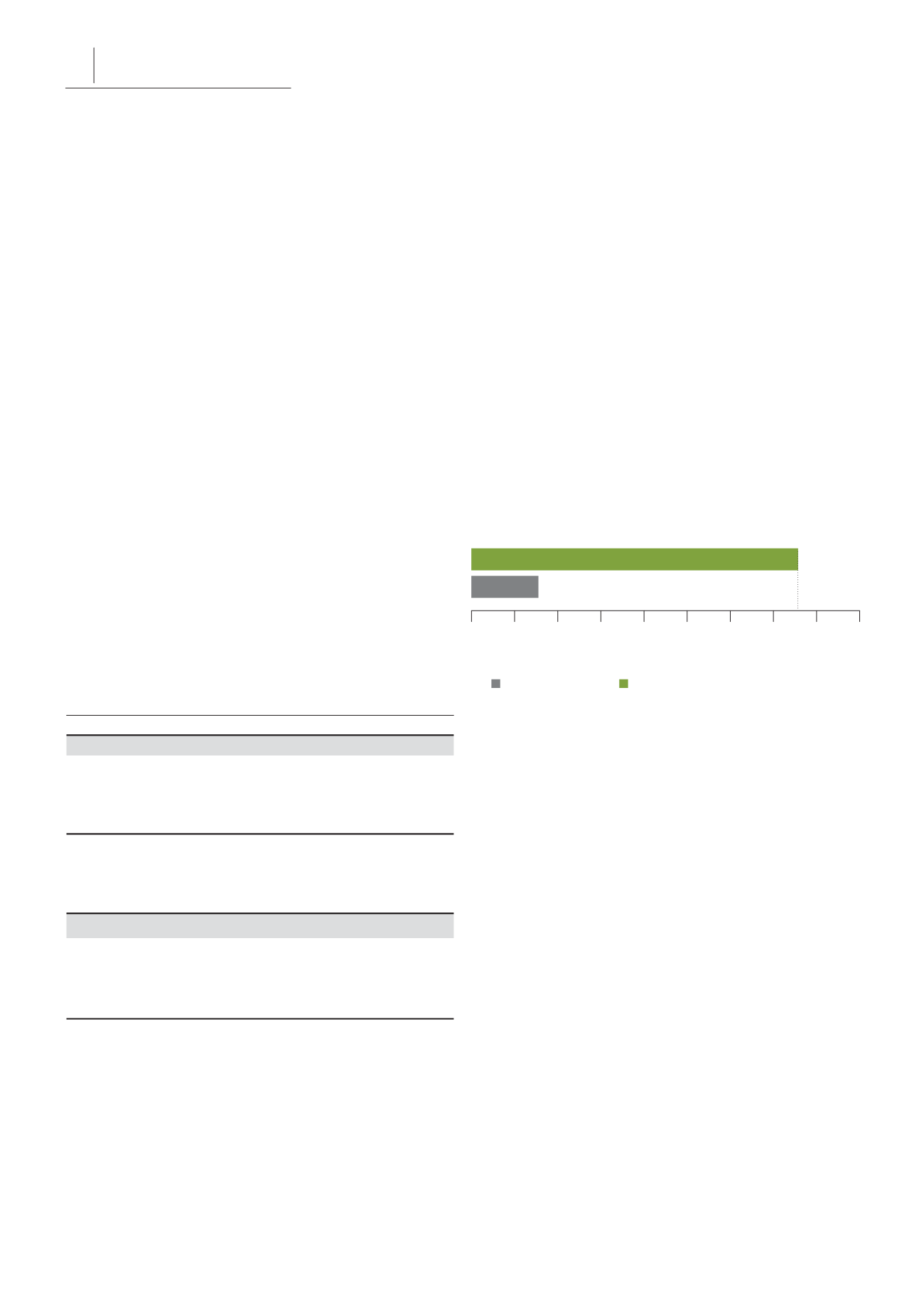
46
INDOFOOD AGRI RESOURCES LTD
SUSTAINABILITY REPORT 2014
and diligent supervision also ensures that no effluent enters the
riparian areas as surface run
-
off.
We have enhanced the handling of POME in three mills using
the open
-
window Aerated Bunker Composting System. For more
information, please read our fertiliser section on page 43.
REFINERY EFFLUENTS
All refinery effluent is properly treated by wastewater treatment
plants to ensure the effluent BOD level and other indicators
are within the legal limits before being discharged into the
river, sea or sewer. In 2014, the volume of discharged water
was 256,806 m
3
and the average BOD level of the discharged
wastewater in four refineries was 15.68 mg/L, which was
below the regulatory limit of 75 mg/L.
OIL SPILLS
We have established stringent procedures on the transport of
CPO from the factories to the storage tanks to prevent CPO
spillage. The same procedures also apply to the transport and
storage of diesel fuel by the operations teams.
During the year, one CPO spillage incident was reported. The
incident occurred during a bad weather on the Java Sea when
the CPO was transported from our storage tank to the refinery
by a third
-
party logistics supplier. 70 tonnes of CPO were lost at
sea with no associated negative environmental impacts. We have
communicated with the logistics supplier concerned to handle
the spillage properly and responsibly.
We are currently reviewing our policies to address any gaps in
the area of oil spill management, including services that are to
be performed by third
-
party suppliers. We are also developing
measures to avoid similar incidents, and to provide guidelines on
the proper transportation of palm oil by sea vessels.
No fines or sanctions related to environmental regulations were
imposed on IndoAgri in 2014.
WATER, EFFLUENTS
AND SPILLS
WATER
Water is crucial to the healthy growth of crops in our plantations,
as well as the daily operations of our estates, mills and refineries.
Clean drinking water is also required to sustain the well being of
every person in our estates, mills and refineries.
Our plantations are generally watered by the seasonal rainfalls.
The mills receive 95% of their water supply from nearby
rivers, and the rest from groundwater. Water for domestic use
in plantation offices and living facilities is drawn mainly from
rainwater as well. To facilitate access to water sources, we
have constructed dams and wells to ensure a steady supply
of water. The refineries obtain 78% of their water requirement
from municipal water and the rest from groundwater.
Before a plantation is developed, it is compulsory to perform
an Environmental Impact Assessment, known as AMDAL. The
assessment will determine the impact of the water usage to rivers
and groundwater levels. All our plantation sites have passed the
AMDAL assessment. Water sources that are important for the
local wildlife and surrounding communities will be identified
under the HCV assessment, and assigned as an HCV area.
The water consumption for processing our products in our
refineries and mills is tabulated above. The data excludes
insignificant amount of water drawn frommunicipal sources, such
as ground water for domestic usage. Calculations are based on
metered volumes.
Table of Water Consumption in Mills and Refineries
Water Consumption
Consumption (m
3
)
Ratio (m
3
/tonne)
Palm Oil Mills
2012
3,469,080
0.96
2013
3,183,974
0.98
2014
3,488,902
0.98
Note 1: Data recorded from RSPO and PROPER audited or certified oil palm
mills (77%). Water consumption ratio covers industrial usage per mill.
Note 2: Ratio is calculated based on average consumption in m
3
per tonne of
FFB processed.
Refineries
2012
723,373
0.52
2013
737,645
0.50
2014
709,893
0.42
Note: Data recorded from four refineries (80%) based on water consumption ratio
per tonne material processed and product in four process stations (refining CPO,
fractionation, margarine, cooking oil filling).
Average BOD Level of Refinery Effluents
MILL EFFLUENTS
POME, a by-product from the milling process, is recycled as
organic fertilisers for the plantations. The POME is collected and
treated in open anaerobic ponds on the estates. Plantation teams
will check and adjust the conditions of the ponds every month to
maintain the Biological Oxygen Demand (BOD) level within the
legal limit of 5,000 mg/L for effluent land application. Careful
15.68
75
Maximum Limit on Government Regulation
BOD Average
Note: Data from four refineries (80%).
0 10 20 30 40 50 60 70 80
BOD Level (mg/L)


